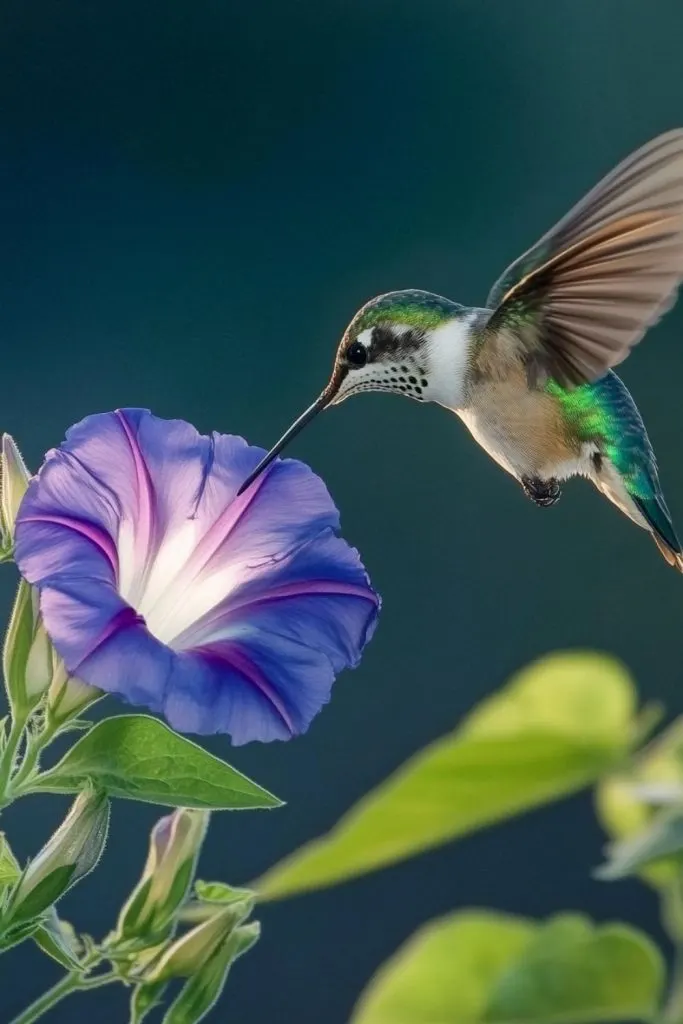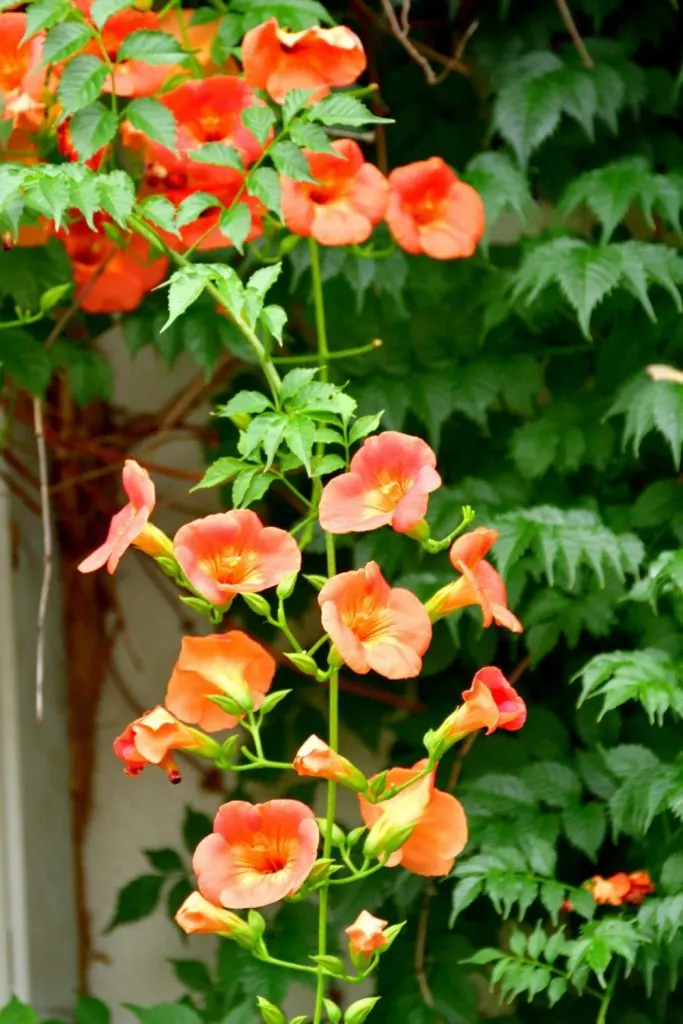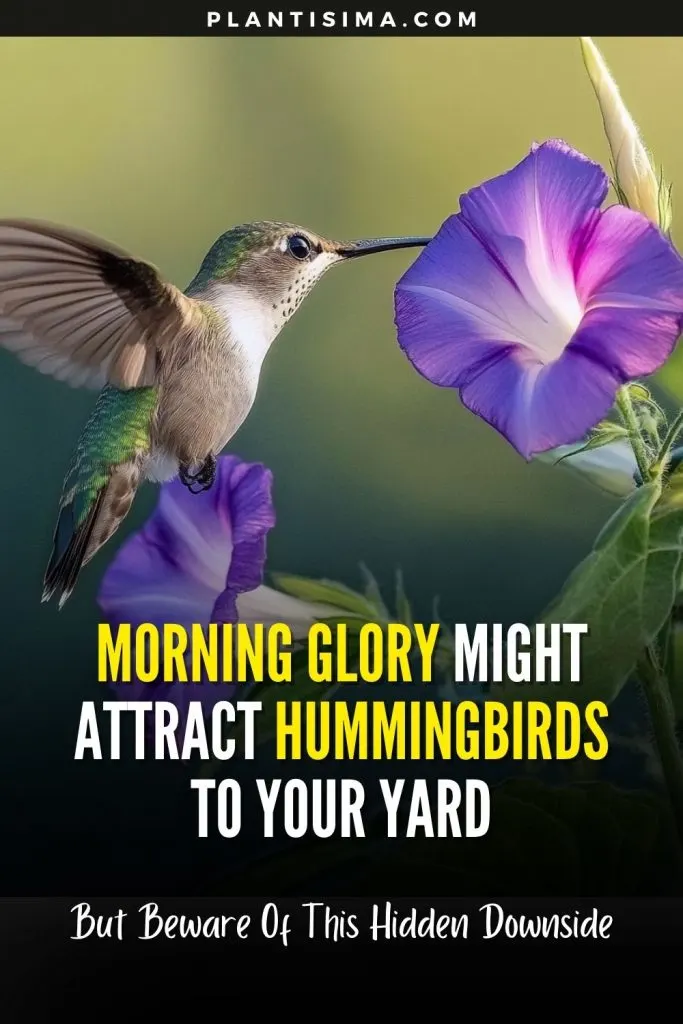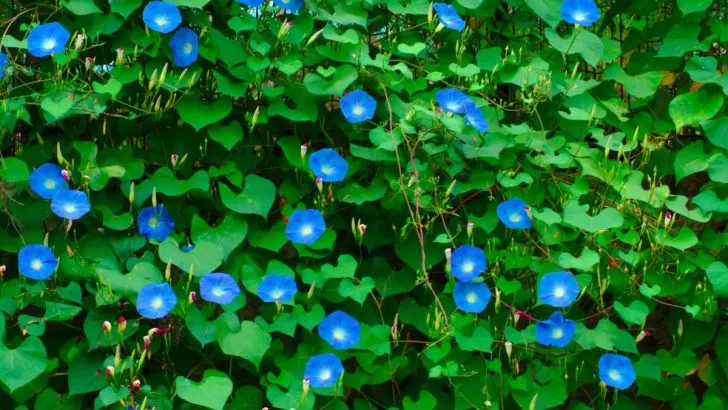Ask a group of gardeners which flowers are best for attracting hummingbirds, and you’ll likely hear morning glory mentioned by more than half. While this isn’t a scientific poll, it reflects the popularity of this flower among those who tend to their gardens.
Yes, it’s true that morning glories will bring these tiny, vibrant birds to your yard, but there’s more beneath the surface. Not all varieties of morning glory are friendly neighbors in your garden.
I found out the hard way that planting certain types of morning glory is like inviting a guest who never leaves.
The Hidden Danger: Morning Glory Can Invade Your Garden

In the world of botany, morning glory goes by the name Ipomea. It’s known for its rapid growth and its tendency to reseed itself, meaning you don’t need to plant it each year for it to reappear.
While this might sound like a dream come true, it can quickly turn into a nightmare when the plant starts spreading unchecked. The trouble is, the most common morning glory found in American gardens, Ipomea purpurea, isn’t native – and it’s incredibly invasive.
With its vivid purple, trumpet-shaped flowers, Ipomea purpurea is undeniably eye-catching. But don’t be fooled by its charm; this plant has a tendency to take over and isn’t suitable for attracting hummingbirds – or for planting in your yard at all.
To clarify, if you live in a region with colder winters, morning glory won’t cause much of a problem. The first frost will kill off the vines, and they won’t come back in the spring. But in warmer climates like Florida or Southern California, this plant can turn into an unwelcome, persistent visitor that you just can’t get rid of.
And if you’re thinking of containing it in a pot, think again. Morning glory drops its seeds all around, and even a gentle breeze can scatter them far and wide, allowing the plant to spread beyond your control.
Smarter Choices for Attracting Hummingbirds

Fortunately, there are plenty of alternatives that will draw hummingbirds to your garden without the risks associated with morning glory.
Reconsidering Morning Glory?
If your goal was to attract hummingbirds with a climbing plant, the trumpet vine is a fantastic alternative. This native species thrives in USDA zones 4 through 8 and will draw hummingbirds without the invasive tendencies.
Another excellent climber is the crossvine. A few years ago, I added one to my garden, and it quickly became a favorite as soon as it began to bloom. This native plant is well-suited for USDA zones 5 through 9 and requires very little to flourish.
If it’s the vibrant color you’re after, consider the passionflower vine. Its striking purple blooms are irresistible to hummingbirds and other pollinators. Plus, you’ll enjoy the added bonus of edible fruit!
For coastal gardeners who struggle with salty conditions, coral honeysuckle is a top choice. Not only do hummingbirds love it, but it’s also resistant to deer—a huge relief for anyone who has had to contend with these persistent grazers.
So, as you can see, there are many beautiful alternatives to morning glory that will still bring hummingbirds to your yard. Save yourself the trouble, and choose a plant that won’t overstay its welcome!


